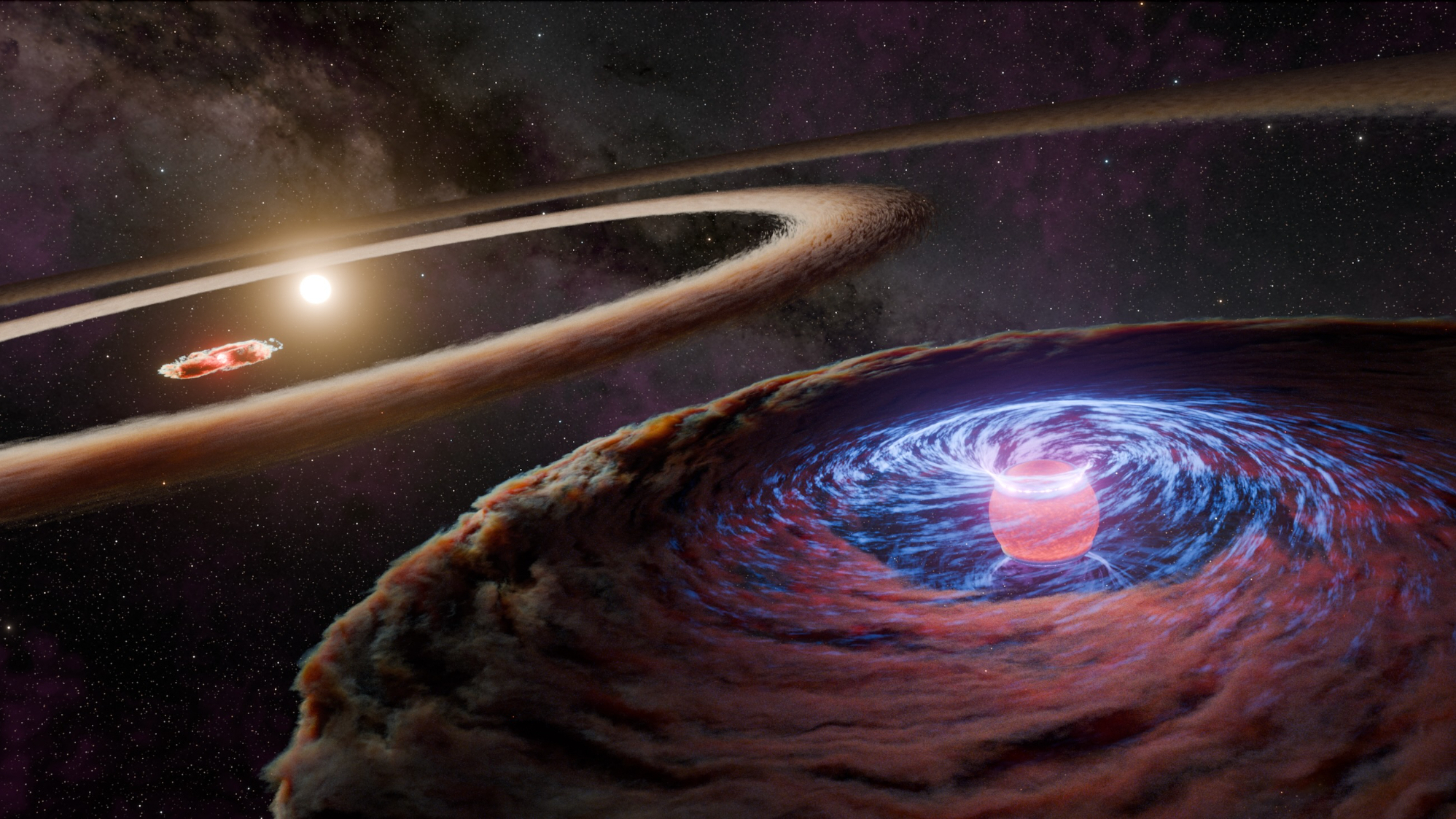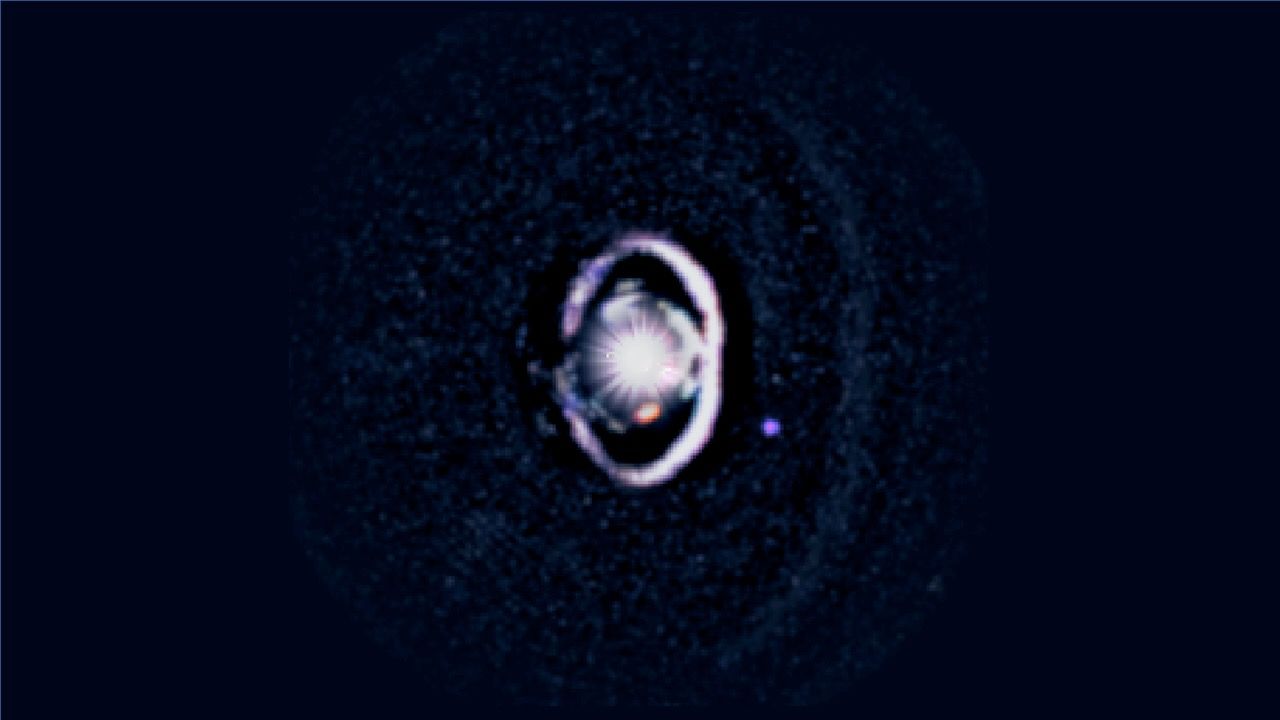A baby planet has been spotted nestled inside a ring around its young parent star, offering a never-before-seen view of planet formation.
Using the Magellan Telescope in Chile and the Large Binocular Telescope in Arizona, astronomers have captured a striking new view of a protoplanet named WISPIT 2b — a gas giant in its infancy estimated to be about five times more massive than Jupiter and just five million years old. The baby planet can be seen within a ring-shaped gap in the dusty disk surrounding its young parent star, named WISPIT 2, as it gathers material to grow into a fully realized planet.
The new image marks the first direct evidence of a growing planet observed within the very ring gap that it’s shaping, confirming a longstanding prediction of how gas giants form, according to a statement from NASA.
You may like

An artist’s concept of the baby planet WISPIT 2b accreting matter as it orbits within a gap in the dusty disk surrounding its parent star. (Image credit: NASA/JPL-Caltech/R. Hurt (IPAC))
WISPIT 2b orbits a star about 437 light-years from Earth. The disk of gas and dust, or “protoplanetary disk,” that surrounds a young star functions as the birthplace for new planets. It has been suggested that gaps or clearings within these disks can be created by growing planets as they scatter material outwards.
WISPIT 2b was first detected using the European Southern Observatory’s Very Large Telescope Spectro-Polarimetric High-contrast Exoplanet REsearch instrument (VLT-SPHERE) in northern Chile, which initially revealed ringlike bands and a conspicuous gap that hinted at the protoplanet’s activity.
Now, using Magellan’s MagAO-X extreme adaptive optics system, astronomers have detected the faint glow of H-alpha light — the spectral fingerprint of hydrogen gas heating up as it falls onto a forming planet. Meanwhile, observations from the Large Binocular Telescope’s infrared cameras captured WISPIT 2b in the same spot, helping to confirm that the emission came from an actively accreting planet rather than another source, according to the statement.
In the recent image shared by NASA, the protoplanet WISPIT 2b is a small purple dot to the right of a bright white ring of dust surrounding the system’s parent star. A fainter white ring outside of WISPIT 2b can also be seen.
The position of WISPIT 2b inside the disk’s gap suggests that it is not merely passing through but shaping its surroundings, sweeping up material and pushing dust aside as it grows. Astronomers even spotted a faint second source in another, inner ring gap that could mark a sibling world in formation.
Their findings from MagAO-X were published Aug. 26 in The Astrophysical Journal Letters, alongside another study published the same day using observations from the VLT-SPHERE instrument.

